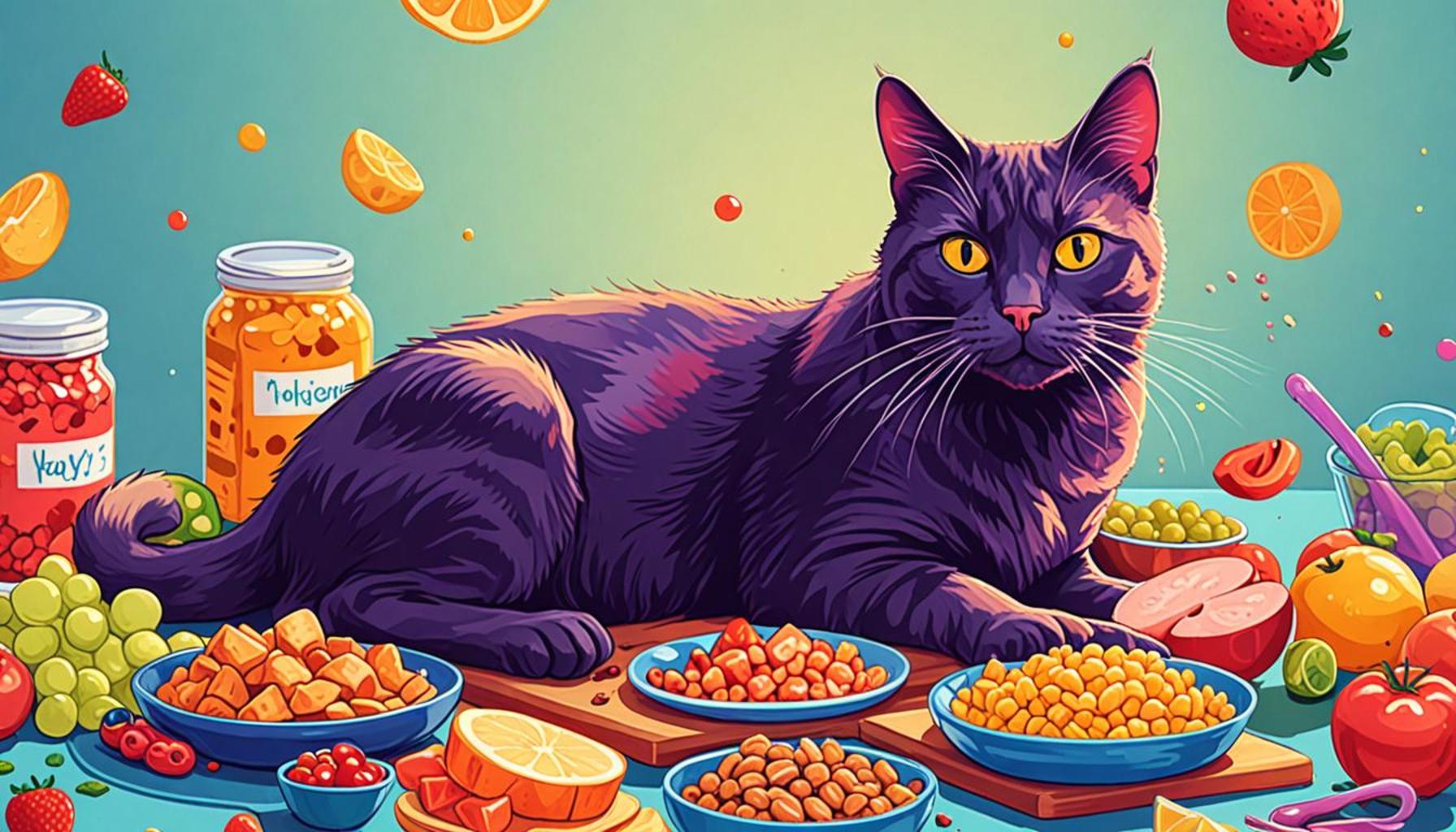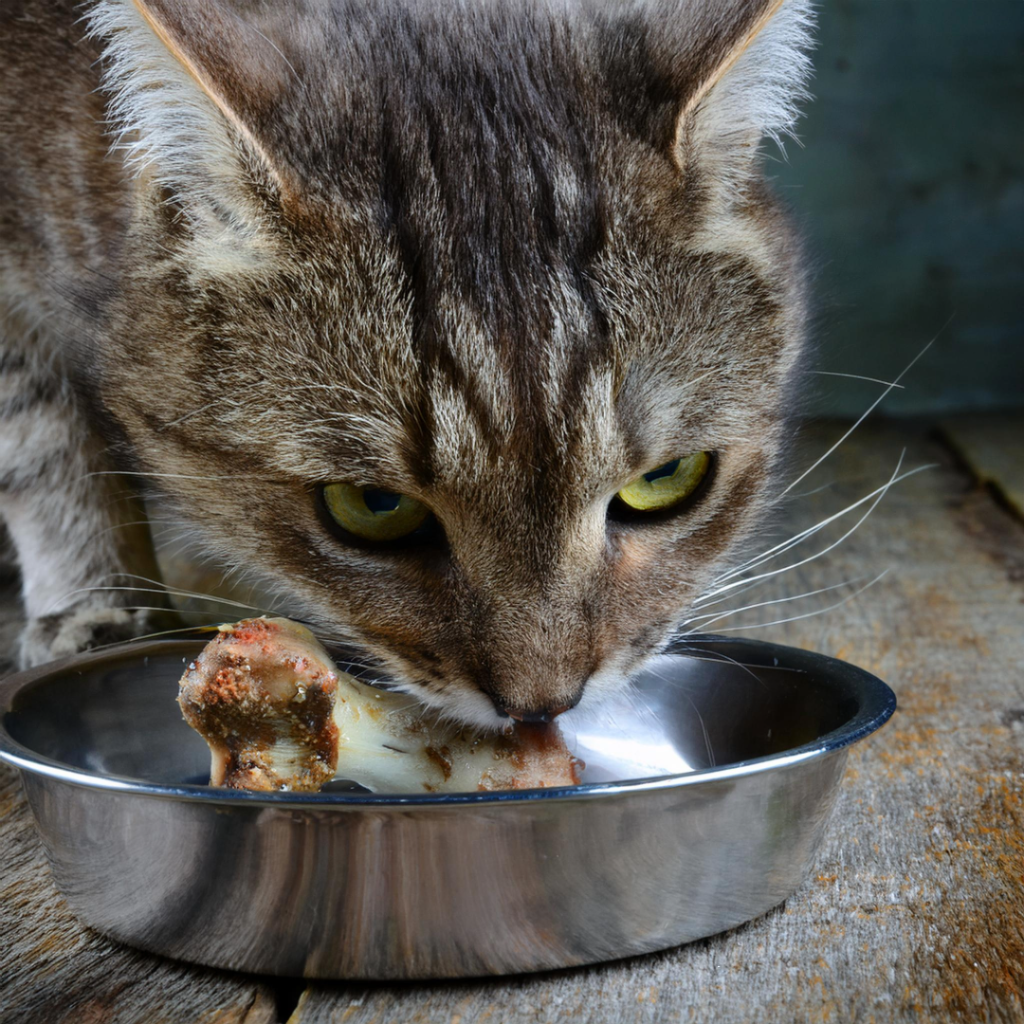How to Safely Vary Your Cats Diet Without Causing Digestive Issues

Understanding Nutritional Diversity for Cats
As any devoted cat owner knows, our feline companions thrive not only on love and attention but also on a well-balanced, diverse diet. Introducing nutritional diversity in your cat’s meals can significantly enhance their overall health, but it is equally important to do so carefully to avoid any potential digestive discomfort. Cats are naturally creatures of habit, and suddenly switching their food can lead to varying degrees of gastrointestinal issues, ranging from mild upset to severe complications.
Key Strategies for Transitioning Diets
Before embarking on a journey to diversify your cat’s diet, consider the following essential strategies:
- Gradual Transition: When introducing new foods, a measured approach is crucial. Aim to swap out a small portion of your cat’s regular food with the new option over several days. For instance, if your cat eats one cup of food daily, start by mixing in a quarter cup of the new food with three-quarters of the old food. Gradually increase the new food’s proportion over the next week.
- Monitor Reactions: Throughout the transition period, closely observe your cat’s behavior, energy levels, and stool consistency. Any signs of distress, like vomiting, diarrhea, or a decrease in appetite, may indicate that the new food is not agreeing with your pet. Should these symptoms arise, reverting to the original diet while consulting a veterinarian is advisable.
- Balanced Nutrition: Ensure that every food you introduce contains the essential nutrients your cat needs. This includes high-quality protein sources, healthy fats, vitamins, and minerals. Notably, cats are obligate carnivores, meaning they require certain amino acids only found in animal tissues, such as taurine. Therefore, it’s beneficial to do research or consult with a vet to confirm that any new food meets these nutritional requirements.
The Importance of Hydration and Oral Health
Veterinarians frequently suggest offering a mix of high-quality dry and wet food to improve hydration levels and support oral health. While dry kibble is convenient and can aid in dental health by reducing plaque buildup, wet food provides necessary moisture and can be more palatable for cats. This combination not only encourages proper hydration but also prevents urinary tract issues, which are common in felines.
Exploring Nutritional Options
As a responsible cat owner, it is valuable to educate yourself on appropriate food types and your cat’s specific dietary needs. Exploring various protein sources, such as chicken, turkey, fish, or even novel proteins like rabbit or duck, can enhance your cat’s meals and make them more exciting. Additionally, it’s crucial to consider food allergies or sensitivities, which are not uncommon in domestic cats. For example, some cats may react poorly to certain grains or proteins, so observing any adverse reactions when trying new foods can provide significant insights.

Enhancing Your Cat’s Dining Experience
By following these methods for safely introducing a diverse array of foods, you can ensure that your beloved feline remains healthy and enjoys their meals without compromising their digestive health. A varied diet not only adds flavor but can also contribute to a more stimulating feeding experience. Prepare to discover new gastronomic delights for your cat that will enhance their overall well-being and happiness!
CHECK OUT: Click here to explore more
Safe Methods for Introducing Dietary Changes
Transforming your cat’s diet from monotonous meals to a wealth of flavors can be an exciting and beneficial endeavor for both you and your feline friend. However, it is essential to navigate this journey with care to prevent any digestive distress. Here are some effective methods you can utilize to ensure a smooth transition while diversifying your cat’s meals.
Emphasizing Incremental Changes
A sudden change in food can trigger a variety of digestive issues, including gas, diarrhea, and vomiting. To avoid these problems, it’s wise to introduce new food options incrementally. Start with a 10% ratio of the new food mixed into their current diet for the first few days. This gradual approach allows your cat’s digestive system to adjust without overwhelming it. Over the week, gradually increase the new food’s percentage while decreasing the old food to eventually reach an equal proportion by the end of the week.
Understanding Your Cat’s Tolerance
Each cat is unique, and their tolerance for different ingredients can vary widely. It is crucial to pay attention and monitor your cat during the transition period. Look for signs of intolerance, such as changes in behavior, appetite fluctuations, or any gastrointestinal symptoms. Keeping a diary of any new foods introduced and their effects can be invaluable for pinpointing any specific sensitivities or preferences your cat may have.
Consistent Meal Scheduling
When diversifying your cat’s diet, maintaining a consistent mealtime routine is paramount. Cats thrive on stability, and regular feeding schedules help their bodies adapt better to changes in diet. Aim to feed your cat at the same times each day and ensure the portions are appropriate for their age, weight, and activity level. Control portion sizes to prevent overindulgence and obesity, as cats often struggle with self-regulation when trying new foods.
Consultation with Your Veterinarian
Before making significant modifications to your cat’s diet, it is always best to consult with your veterinarian. They can provide essential insights into nutritional needs based on age, health status, and breed. Your vet can also recommend suitable brands or specific formulas that align with your kitty’s unique dietary requirements and dietary limitations, aiding you in making informed decisions.
The Role of Natural Ingredients
When selecting new food options, consider incorporating natural ingredients that can aid digestion. Foods that contain probiotics can help establish a healthy gut flora, potentially mitigating the risk of digestive issues. Ingredients such as pumpkin or sweet potatoes can also be beneficial, providing fiber to assist with digestion. Always check labels for high-quality ingredients and avoid products with excessive fillers or artificial additives, which could harm your cat’s digestive system.
By grasping these fundamental principles for safely varying your cat’s diet, you set the stage for a more enriching and healthful culinary experience. An expanded diet can greatly enhance your cat’s interest in food while promoting its overall wellbeing, as long as appropriate steps are taken.
| Diet Variation Techniques | Impact on Digestive Health |
|---|---|
| Gradual Introduction of New Foods | Allows the cat’s digestive system to adapt, reducing the risk of upset stomach. |
| Incorporating Probiotics | Enhances gut flora, improving digestion and minimizing issues associated with dietary changes. |
| Using Novel Proteins | Reduces the chances of allergic reactions while diversifying nutrient intake. |
| Monitoring Portion Sizes | Prevents overfeeding and helps track the cat’s response to new foods for better adjustment. |
Varying your cat’s diet can be an exciting journey, but it’s essential to proceed with caution. Start by gradually introducing new foods to prevent gastrointestinal disturbances. Instead of offering a whole new meal at once, mix a small portion of the new food with the existing kibble to allow your cat to acclimate. This method not only helps in easing your pet into the new diet but also allows you to observe any potential reactions.Another effective strategy is to incorporate probiotics into your cat’s meals. Probiotics boost beneficial bacteria in the gut, promoting healthy digestion during times of dietary change. Additionally, considering the use of novel proteins—like rabbit or venison—can help you diversify your cat’s protein sources while minimizing allergic reactions.Lastly, focusing on portion control during this transitional phase is crucial. It can prevent your cat from overeating and give you insight into their response to different foods. Being observant and patient ensures a smooth and healthy journey towards a more varied diet without compromising your cat’s digestive health.
CHECK OUT: Click here to explore more
Creative Ways to Diversify Your Cat’s Diet
Once you’ve established a gradual approach to introducing new foods, it’s time to explore some creative avenues that provide nutritious options while keeping your cat’s palate intrigued. Diversifying your cat’s diet doesn’t just improve meal appeal; it can also enhance their health. Here are some innovative ideas to ensure your furry companion reaps the benefits of a varied diet while safeguarding their digestive health.
Homemade Treats: A Flavorful Adventure
Crafting homemade cat treats can be a fun and rewarding way to explore new flavors and ingredients without straying too far from your cat’s established diet. Ingredients such as chicken, tuna, or even pumpkin are delectable options that you can easily prepare at home. For example, simple recipes like mixing canned tuna with a bit of oat flour and baking them can create tasty, nutritious snacks. Not only does this give your cat a variety of flavors, but it also allows you to control the quality of ingredients, thereby minimizing the risk of digestive upset.
Incorporating Wet Food into the Diet
Transitioning from a dry food-only diet to incorporating wet foods can significantly boost your cat’s hydration levels and provide essential nutrients. Wet food comes in various flavors that cats may find irresistible, and with the added moisture content, it supports urinary tract health, which is crucial for feline wellness. Make sure to choose high-quality wet foods with real meat as the first ingredient. Gradually introduce these choices for a tasty twist to mealtime that can also keep your cat hydrated and satisfied.
Rotating Proteins for Nutritional Balance
The benefits of protein rotation are immense. Just as humans do well with a varied protein intake, cats can benefit from different sources as well. Consider rotating between chicken, turkey, fish, and beef. Each protein source offers diverse amino acids necessary for your cat’s overall health. Introducing a new protein every few weeks helps to maintain interest in their diet while ensuring they receive a well-rounded nutritional profile. Pay close attention to the response your cat has to each protein, noting how their digestion fares with each switch.
The Importance of Fiber
A fiber-rich diet is paramount for maintaining a healthy digestive system in cats. Incorporating foods rich in fiber—such as green beans, carrots, or oat bran—can support gut health and prevent constipation. These ingredients can be seamlessly added to homemade meals or served as a side dish on their own, ensuring your kitty stays satisfied and healthy. Always introduce fiber gradually, as sudden increases can lead to bloating or discomfort.
Mind the Toppings
Enhancing your cat’s meals with toppings can be an exciting way to introduce new flavors without changing the entire diet. Simple additions like a small spoonful of unsweetened Greek yogurt or finely chopped cat-safe herbs, like parsley or catnip, can provide a new sensory experience. However, it’s important to introduce toppings slowly, ensuring that your cat reacts positively before making them a permanent addition to their meals.
By exploring these creative avenues for diversifying your cat’s diet, you can foster a more enriching eating experience that promotes health and well-being while taking care to prevent any digestive issues. Keeping things interesting for your cat can lead not just to greater enjoyment during meal times but also to a healthier, happier life overall.
CHECK OUT: Click here to explore more
Conclusion: A Balanced Approach to Cat Nutrition
In summary, safely varying your cat’s diet is not just about creating excitement at mealtime; it’s an essential aspect of promoting their overall health and well-being. By gradually introducing new foods, incorporating homemade treats, and exploring different protein sources, you set the stage for a nutritionally diverse diet that can lead to improved vitality in your feline companion. Remember that hydration is key, thus integrating wet foods offers both flavor variety and moisture, supporting critical bodily functions.
Moreover, the significance of fiber and thoughtful toppings cannot be overstated. These additions can enhance digestion and stimulate your cat’s interest in their meals while helping to prevent common digestive issues. Pay close attention to your cat’s reactions, and adjust their diet based on their individual needs and preferences. Each cat is unique, and what works for one may not suit another, so remain vigilant and responsive.
By embracing creative methods to diversify your cat’s diet while remaining mindful of their digestive health, you not only enrich their mealtime experience but also contribute to a healthier lifestyle. For ongoing success in this endeavor, consider consulting your veterinarian for personalized guidance, particularly when introducing significant changes to your cat’s diet. Your commitment to their nutrition will foster a happier, more fulfilled pet, leading to a stronger bond between you and your beloved feline.



